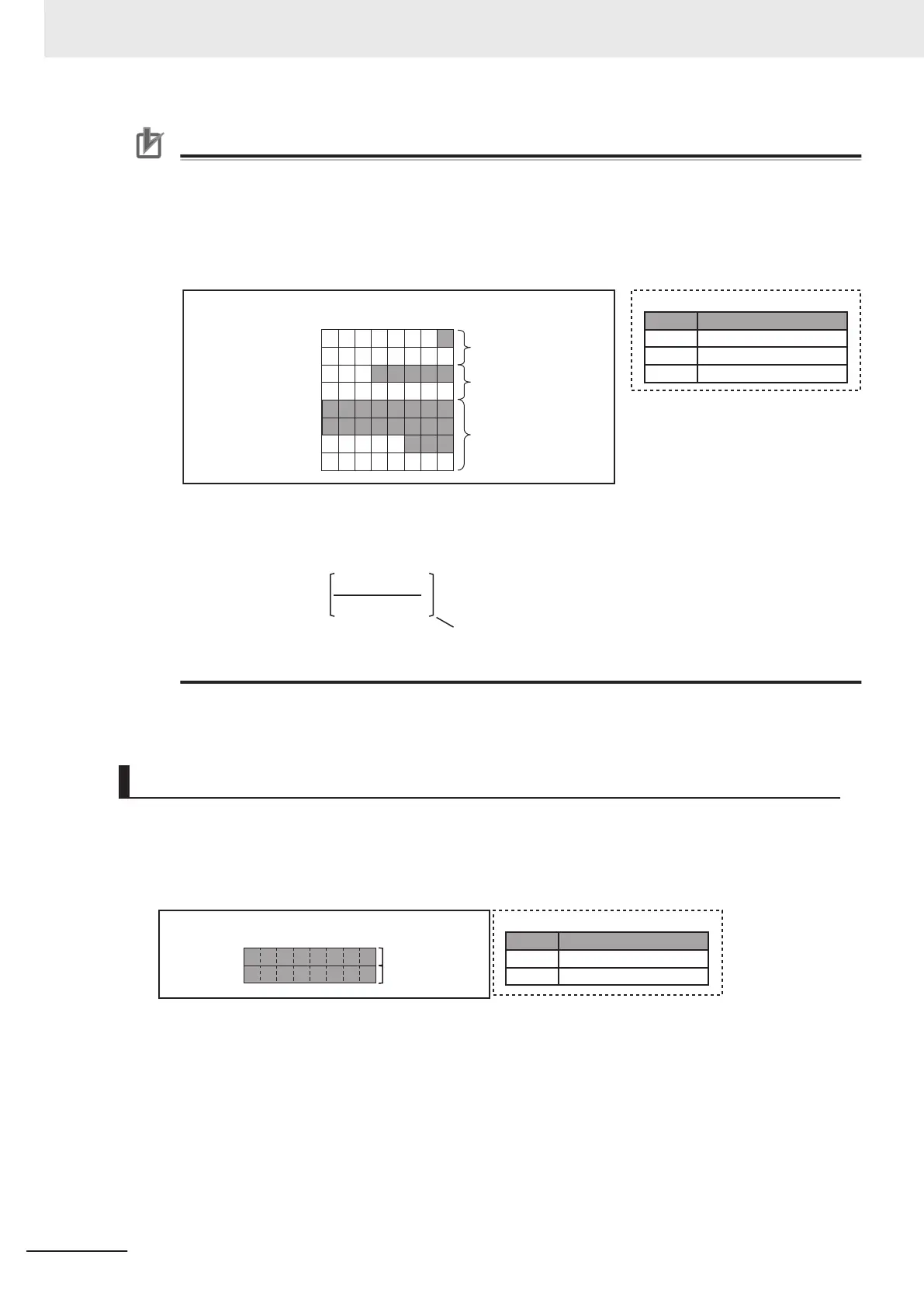Precautions for Correct Use
Amount of Memory That Is Allocated for BOOL Arrays
T
wo bytes are allocated in memory for individual BOOL variables, BOOL structure members, and
BOOL union variables.
However, for a BOOL array, two bytes of memory are not allocated for each element. One bit is
allocated in order for each element. For the entire array, a multiple of two bytes of memory is allo-
cated (including unused bits).
Variable Table
Name
A
B
C
Data type
BOOL
ARRAY[1..5]OF BOOL
ARRAY[0..18]OF BOOL
Variable A
Variable B
Variable C
Bytes
Memory
First byte
First byte + 1
First byte + 2
First byte + 3
First byte + 4
First byte + 5
First byte + 6
First byte + 7
Two bytes are allocated.
Two bytes are allocated
for 5 elements.
Four bytes are allocated
for 19 elements.
Therefore, the following formula gives the amount of memory that is allocated for a BOOL array.
For 1 to 16 elements, 2 bytes are allocated. For 17 to 32 elements, 4 bytes are allocated.
Amount of me
mory = 2
Truncate the decimal portion of the result
of the calculation in brackets.
Number of
elements − 1
16
+2
Specific examples of the rules for memory allocation for variables of each data type are given below.
Basic Data Types
Variables with One-Byte Alignments (e.g., BYTE)
One byte of memory is allocated for the one-byte alignment.
Example: T
wo consecutive BYTE variables
Variable A, 1 byte
Variable B, 1 byte
Variable Table
Name
A
B
Data type
BYTE
BYTE
Bytes
Memory
First byte
First byte + 1
Variables with Two-byte Alignments (e.g., BOOL and WORD)
Two bytes of memory are allocated for the two-byte alignment.
Example: Two consecutive BOOL variables
Appendices
A-48
NJ/NX-series CPU Unit Built-in EtherNet/IP Port User’s Manual (W506)

